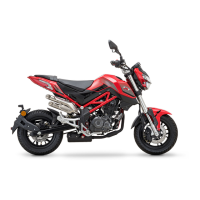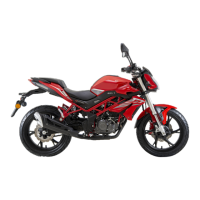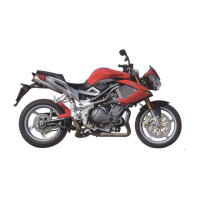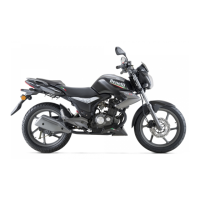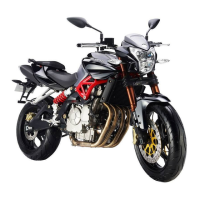●Put tire on the rim, and align the air inlet valve [A]
with the balance mark [B] on the tire (mark made with a
chalk when the tire is removed or a yellow paint mark
on the new tire).
●Install tire bead at the edge of rim using a tire changer.
●
Lubricate tire bead and rim edges using soap or a
rubber lubricant when inflating the tire, so as to install
the tire bead at the sealing surface of rim.
●Align the tire bead at the rim, inject compressed air
into the tire until the bead engages with the inner
sealing surface of the rim.
When inflating the tires, be sure to install air
inlet valve, and the pressure inside the tire does
not exceed 400 kPa (4.0 kgf/cm
2
). Excessive
inflation may lead to puncture of tire, thus
causing casualties:
●
Check whether the rim line [A] on both sides of the
tire’s sidewall is parallel to the edge of the rim.
★ If the edge of the rim is not parallel to the rim line
of the tire sidewall, remove the air inlet valve.
●Lubricate the edges of the rim and bea
d.
●Install the air inlet valve and re-inflate the tire.
●After installing the
bead into the edge of the rim,
check the tire for leaks.
○The air inflated to the tire should be slightly higher
than the standard inflating volume.
○Apply soap to tire or soak the tire in the water. If there
is any air bubble, the tire may leak.
●Adjust the tire pressure according to the specified tire
pressure standard (see “Regular
Maintenance”—“Checking Tire Pressure”).
● Install air inlet valve.
● Adjust the dynamic balance of wheel (see “Adjusting
Dynamic Balance”).
R
epairing Tires
There are t
wo methods commonly used to repair vacuum tires. One is called “temporary (external) repair”: it
does not need to remove the tires from the rim to repair; the other is called “permanent (internal) maintenance”: it
needs to remove the tire to repair. It is
generally believed that compared to a temporary (external) repair,
permanent (internal) maintenance ensures a more durable and stable tire. In addition, permanent (internal)
maintenance has another benefit: associated damage that cannot be found in externa
l examination can be
identified in a thorough examination. In view of this, Benelli does not recommend the use of temporary (external)
maintenance, only recommend the use of reasonable permanent (internal) maintenance. The repair methods
recommended by man
ufacturers may differ slightly. In order to ensure safe ride, please follow the manufacturer’s
recommended repair tools and maintenance materials for repairs.
- 297 -
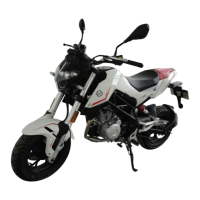
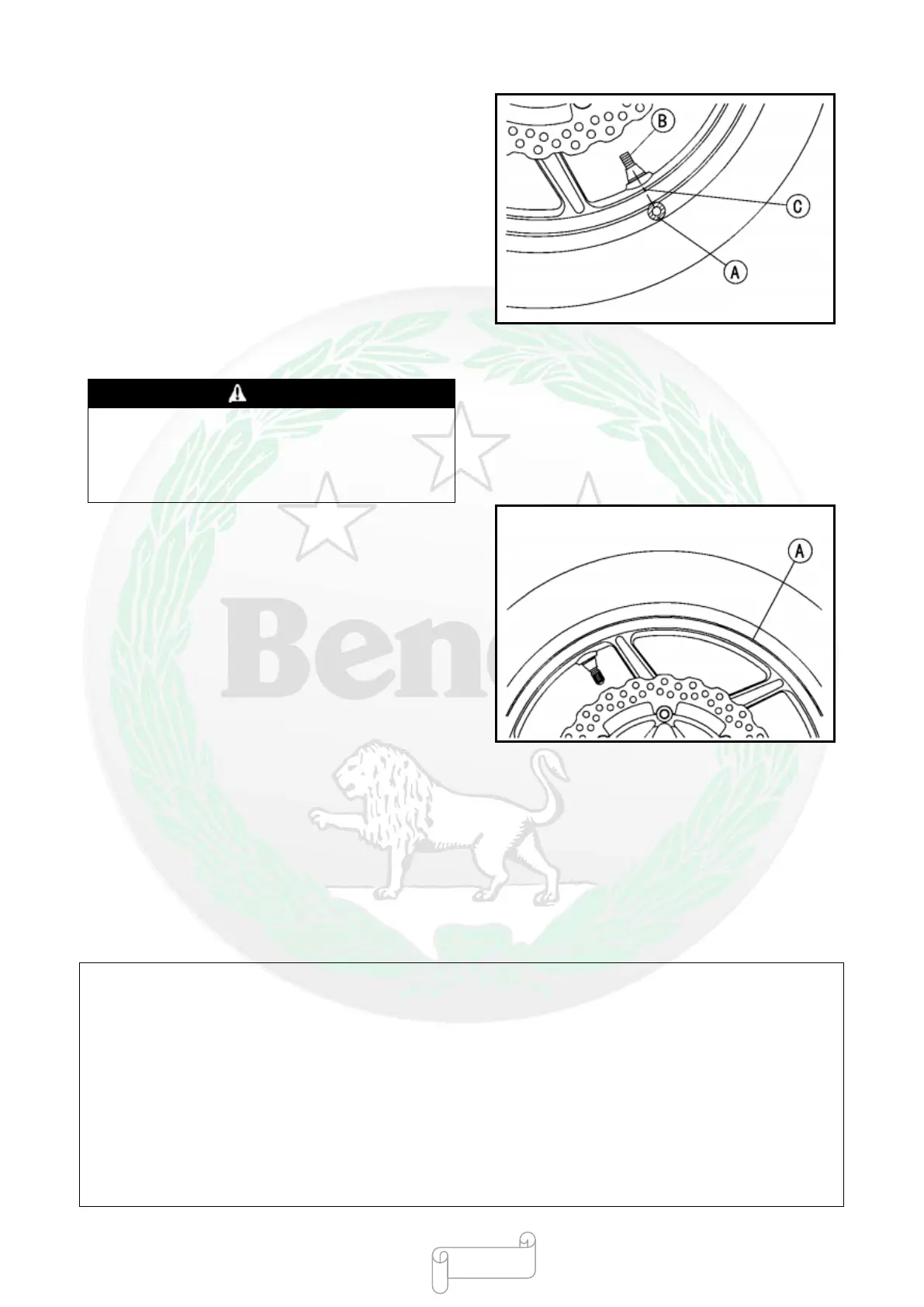